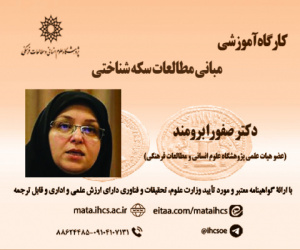ارائه مدل عِلی سبک های یادگیری بر اساس سواد رسانه ای: نقش میانجی خودتنظیمی و آموزش های ترکیبی (مقاله علمی وزارت علوم)
درجه علمی: نشریه علمی (وزارت علوم)
آرشیو
چکیده
رسانه ها تغییرات نسبتاً زیادی در الگوی یادگیری دانشجویان خلق کرده اند و رویکردهای آموزشی و یادگیری را توسعه بخشیده و موجب بهبود سبک های یادگیری دانشجویان شده اند؛ لذا هدف این پژوهش ارائه مدل عِلی سبک های یادگیری بر اساس سواد رسانه ای با نقش میانجی خودتنظیمی و آموزش های ترکیبی در میان دانشجومعلمان پسر شهر کرمانشاه بود. این پژوهش به لحاظ هدف جزو پژوهش های کاربردی و ازلحاظ روش گردآوری داده ها توصیفی از نوع هم بستگی بود . جامعه آماری پژوهش را کلیه دانشجومعلمان پسر مشغول به تحصیل شهر کرمانشاه در سال تحصیلی 1403-1402 به تعداد 1250 نفر تشکیل می دهد. برای انتخاب نمونه از روش کوکران استفاده شد، به این صورت که با مراجعه به دانشگاه فرهنگیان، دانشگاه پیام نور و دانشگاه آزاد به روش نمونه گیری تصادفی تعداد 294 نفر که هم دانشجو و هم معلم بودند شناسایی و انتخاب شدند. ابزارهای مورداستفاده در پژوهش، پرسش نامه سواد رسانه ای فلسفی (1393)، پرسش نامه نگرش نسبت به تکنولوژی آموزشی یاوز (2005)، پرسش نامه سبک های یادگیری کلب (2005)، پرسش نامه راهبردهای یادگیری خودتنظیمی پینتریچ و دی گروت (1990) بود. برای تجزیه وتحلیل داده ها ضریب هم بستگی پیرسون و مدل سازی معادلات ساختاری استفاده شد. براساس یافته های به دست آمده، تمامی اثرات مستقیم و غیرمستقیم متغیرها تأیید شدند. به طورکلی نتیجه گیری می شود مدل علی سبک های یادگیری بر اساس سواد رسانه ای با نقش میانجی خودتنظیمی و آموزش های ترکیبی با مدل تجربی برازش دارد.Presenting a Causal Model of Learning Styles Based on Media Literacy: The Mediating Role of Self-Regulation and Blended Education
The media has caused relatively many changes in students' learning patterns, developed teaching and learning approaches, and improved students' learning styles. This study is an applied research in terms of purpose and descriptive correlation in terms of data collection method. The statistical population of the study consists of all male student-teachers studying in Kermanshah in the academic year 2023-2024, numbering 1250 people. Cochran's method was used to select the sample, so that by referring to Farhangian University, Payame Noor University, and Azad University, 294 people who were both students and teachers were identified and selected by random sampling method. The research tools were the Philosophical Media Literacy Questionnaire (2014), the Yavuz Educational Technology Attitude Questionnaire (2005), the Kolb Learning Styles Questionnaire (2005), and the Pintrich & De Groot Self-Regulated Learning Strategies Questionnaire (1990). To analyze the data, Pearson correlation coefficient and structural equation modeling were used. Based on the findings, all direct and indirect effects of the variables were confirmed. In general, the causal model of learning styles is based on media literacy with the mediating role of self-regulation, and blended education fits with the empirical model.







